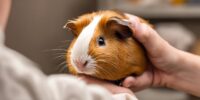What Are the Breeding Considerations for Different Guinea Pig Breeds?
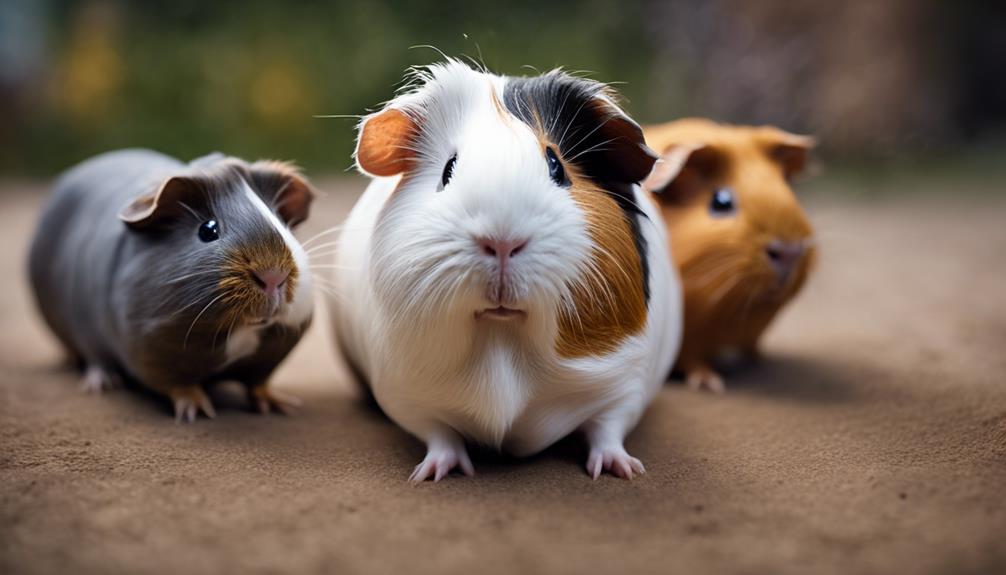
When breeding guinea pigs, it is essential to consider factors that can affect the health and well-being of the animals. Different guinea pig breeds have specific characteristics that need to be taken into account when planning a breeding program.
The size of the breed, as well as its coat type and color, are important considerations when selecting animals for breeding. It is also crucial to be aware of any inherited health conditions that may be present in certain breeds.
Additionally, proper housing and care for pregnant guinea pigs and their offspring are essential to ensure a successful breeding program. Providing a nutritious diet and a clean, comfortable environment is crucial for the health of both the mother and her babies.
Overall, careful planning and consideration of these factors are essential for successful guinea pig breeding programs and for ensuring the health and well-being of the animals involved.
Breed-Specific Characteristics
When considering breeding guinea pigs, it's essential to understand the breed-specific characteristics that each type possesses. Guinea pigs come in various coat lengths, textures, and colors, making each breed unique. For instance, the Abyssinian guinea pig is known for its rosettes or whirls in the fur, adding a distinctive pattern to its appearance. On the other hand, Peruvian guinea pigs boast long, flowing hair that requires regular grooming to prevent tangles and matting. In contrast, short-haired breeds like the American guinea pig are low-maintenance when it comes to grooming, making them ideal for those who prefer a simpler care routine.
It is essential to consider the grooming needs of each breed before breeding guinea pigs, as some varieties may require more attention to maintain their coat health. Understanding the breed-specific characteristics, including coat length, texture, and color variations, can help breeders make informed decisions when selecting pairs for breeding. By being knowledgeable about these traits, breeders can ensure the health and well-being of the guinea pigs they work with.
Genetic Predispositions to Consider
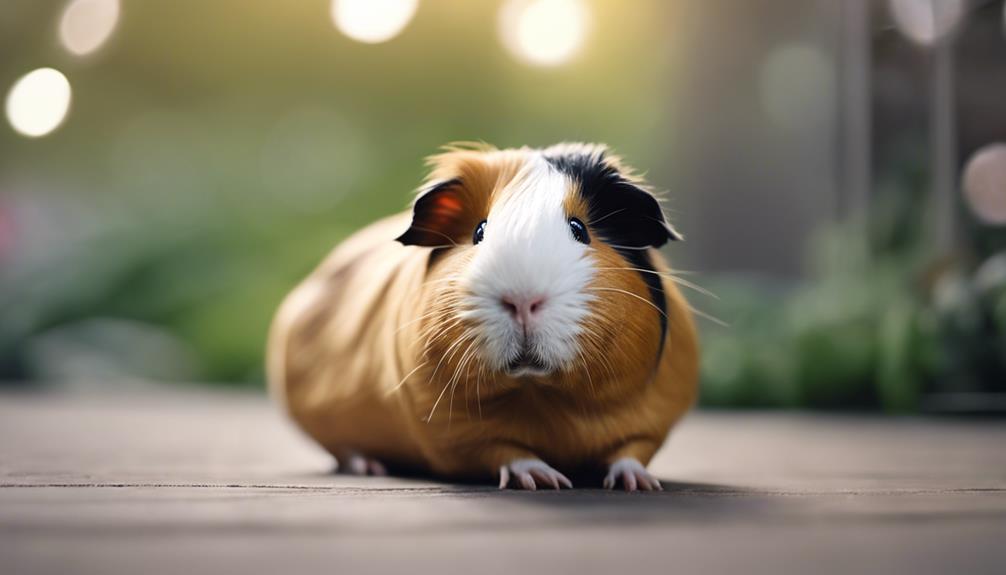
Genetic predispositions play a crucial role in breeding considerations for specific guinea pig breeds, particularly when addressing traits like coat type, color, and potential health issues. Breeders need to carefully consider the genetic predispositions of guinea pigs, especially for breeds with unique characteristics such as hairless guinea pigs. Understanding the inheritance patterns for coat type and color can help breeders predict the outcomes of their breeding programs and maintain breed standards.
When selecting guinea pigs for breeding, it's essential to avoid known genetic health issues within specific breeds. Some guinea pig breeds may have higher risks of certain diseases or conditions due to their genetic makeup. To make informed breeding choices, breeders should consult breed standards and consider genetic testing to ensure the health and well-being of the offspring.
Health Concerns and Risks
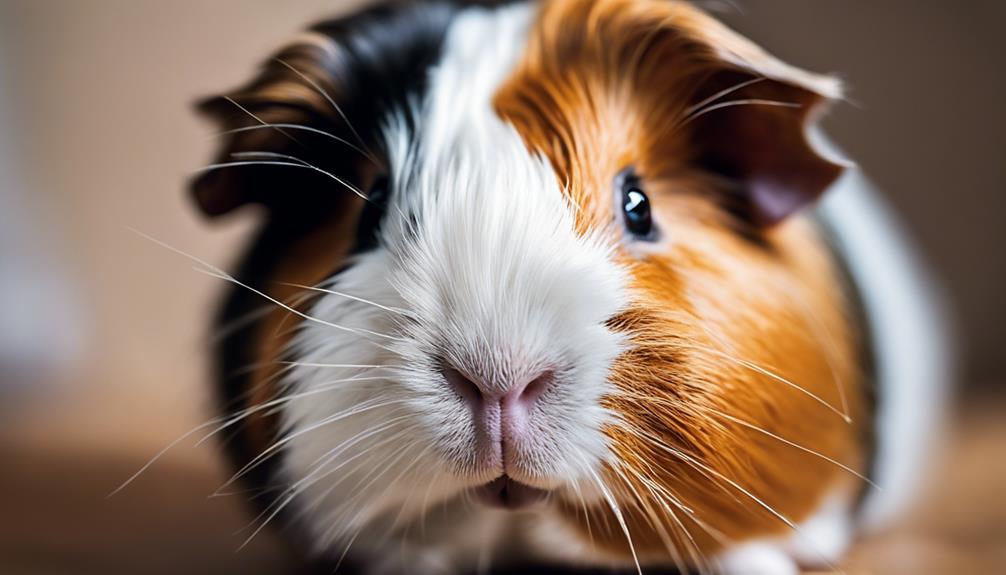
Certain guinea pig breeds exhibit specific health concerns and risks that breeders must be mindful of to ensure the well-being of the animals. When breeding guinea pigs, it's crucial to consider the potential health issues that certain breeds may face.
For instance, the Abyssinian breed is prone to dental problems, necessitating regular check-ups to maintain oral health. Skinny Pigs, due to their hairless nature, require special attention to prevent skin issues. Himalayan guinea pigs are sensitive to temperature variations and may need additional warmth during colder seasons.
Texel guinea pigs, known for their long and curly fur, are susceptible to matting and skin complications if not groomed regularly. Additionally, breeds like the American guinea pig may be more inclined towards obesity, emphasizing the importance of a well-balanced diet.
Temperament Compatibility for Breeding
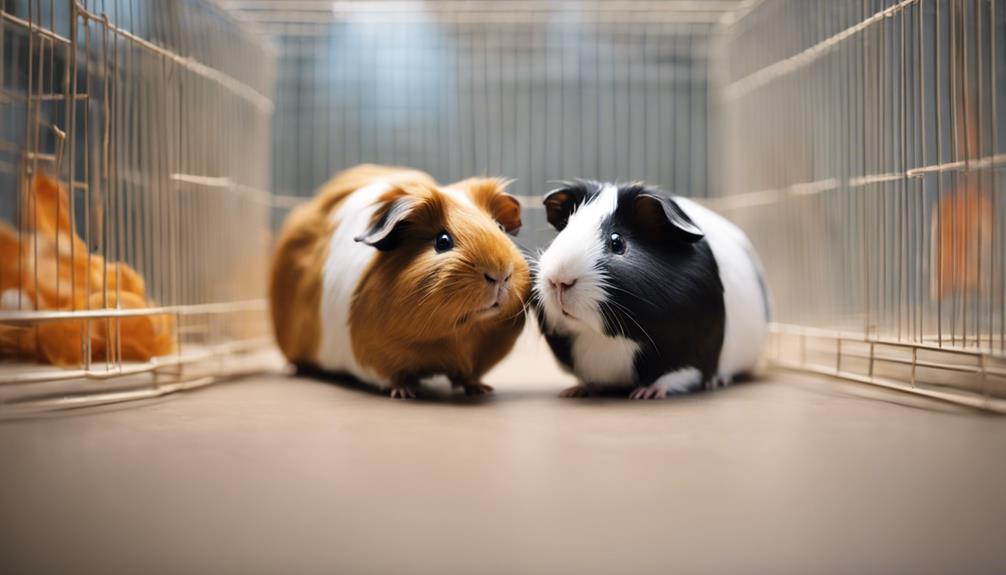
To ensure successful mating and minimize risks of stress or injuries, understanding the temperament compatibility of breeding pairs is crucial in guinea pig breeding. Guinea pigs, like all animals, have unique personalities that can influence their interactions with potential mates. Aggressive or incompatible pairs can lead to failed breeding attempts, injuries, or unnecessary stress for the animals involved.
It's important to observe the interactions between guinea pigs before breeding to assess their compatibility. Matching guinea pigs with similar temperaments can significantly improve breeding success rates. Pairing guinea pigs with complementary personalities can enhance the breeding process and reduce the chances of aggression during mating.
Breeding Age and Maturity

Female guinea pigs should ideally be bred before reaching 7 months of age to minimize the risk of delivery complications. For males, it is recommended they are between 3 to 4 months old at their first breeding to ensure maturity. The average gestation period for guinea pigs is around 63 days, with larger litters potentially resulting in shorter pregnancy terms. Guinea pigs have a longer gestation period compared to other rodents, which is an essential factor to consider when breeding. Below is a table summarizing key points related to breeding age and maturity in guinea pigs:
| Aspect | Information |
|---|---|
| Female Age | Ideally bred before 7 months old |
| Male Age | Recommended between 3-4 months old at first breeding |
| Gestation Period | Average term is around 63 days |
| Maturity | Crucial for both males and females |
| Litter Size | Can affect the length of the pregnancy term |
Understanding these factors is vital for successful breeding and ensuring the health and well-being of the guinea pigs.
Handling Newborns and Nursing
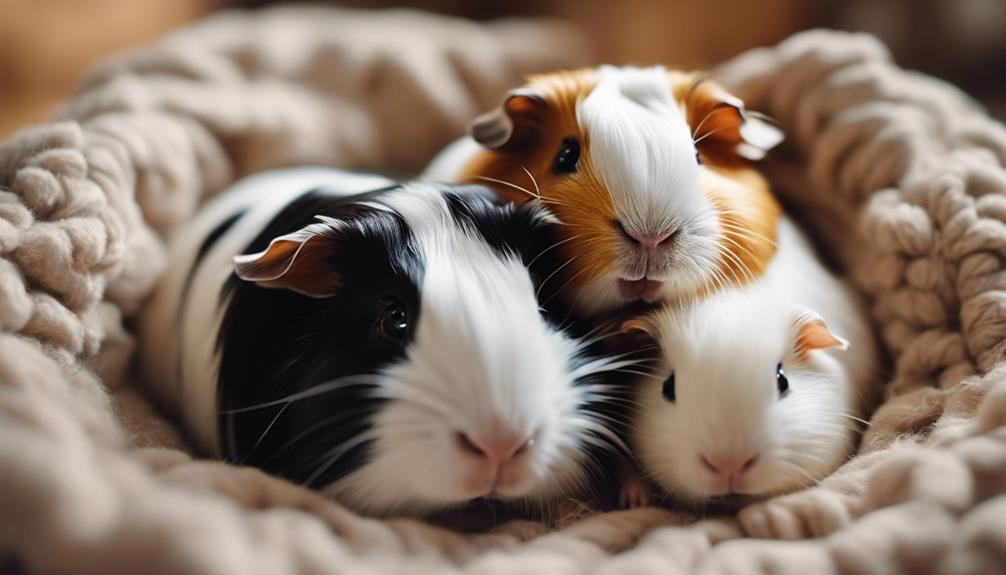
After considering breeding age and maturity, the focus now shifts to the crucial aspects of handling newborns and nursing in guinea pigs. New guinea pigs are born weighing about 3.5 ounces (100 g) and come into the world already covered in hair. Within just two days, these tiny creatures can see, run, and even start nibbling on solid food. Nursing is a vital part of their early development, with newborns relying on their mothers for milk until they're around 3 weeks old. At this point, they'll have reached a weight of about 6 ounces (170 g) and can transition to eating adult food.
Handling newborn guinea pigs is essential not only for their physical care but also for building trust and bonding. Starting from 2-3 weeks old, interacting with these young guinea pigs can help them grow accustomed to human touch and presence. This early socialization can have long-lasting effects on their behavior and comfort around people.
Considerations for Hybrid Breeds
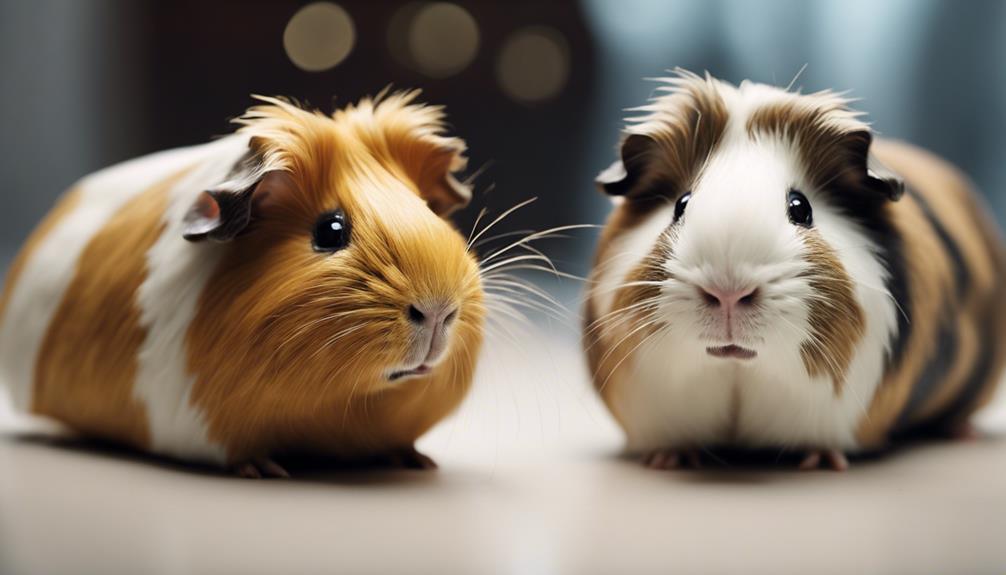
When breeding hybrid guinea pigs, several important considerations can help ensure the health and well-being of the offspring:
- Understanding Parent Breeds: It's crucial to have a deep understanding of the characteristics and traits of the parent breeds involved in the hybridization process. This knowledge can help predict potential outcomes and better care for the offspring.
- Genetic Diversity: Breeding hybrid guinea pigs can introduce a wider gene pool, which may reduce the risk of genetic health issues commonly associated with inbreeding. This diversity can lead to stronger and healthier offspring.
- Combination of Traits: Hybrid guinea pigs often exhibit a mix of fur types, colors, and patterns inherited from their parent breeds. Appreciating and managing these combinations can result in unique and visually appealing offspring.
- Exploring New Variations: Breeding hybrids can be an exciting opportunity to explore novel traits and variations in guinea pig offspring, contributing to the diversity and richness of the guinea pig population.
Frequently Asked Questions
Can Different Breeds of Guinea Pigs Mate?
Yes, different breeds of guinea pigs can mate. Genetic compatibility plays a role in potential health risks, resulting in mixed breed offspring with various characteristics. Responsible breeding practices, considering care and restrictions, are crucial.
Can You Put Two Different Breeds of Guinea Pigs Together?
Yes, they can put two different breeds of guinea pigs together. Breeding compatibility, genetic diversity, hybrid offspring, temperament differences, and health considerations should be assessed to address potential breeding challenges when mixing different guinea pig breeds.
What You Need to Know About Breeding Guinea Pigs?
What does one need to know about breeding guinea pigs? Understanding health risks, genetic diversity, temperament differences, housing requirements, breeding ages, and responsible breeding practices is crucial for successful and ethical guinea pig breeding.
Can Guinea Pigs Be Mixed Breed?
Yes, guinea pigs can be mixed breeds. Crossbreeding options offer genetic diversity, but breeders must consider health, hybrid vigor, temperament traits, and appearance variations. Mixed breed guinea pigs can display a unique blend of characteristics.




